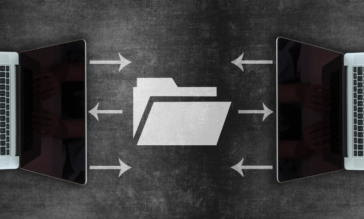Understanding Endpoint Detection and Response (EDR)

In the ever-evolving landscape of cyber threats, organizations are constantly searching for advanced solutions to protect their digital assets. Among these protective mechanisms, Endpoint Detection and Response (EDR) stands out. Let’s delve deeper.
What is EDR?
Endpoint Detection and Response, often abbreviated as EDR, is a cybersecurity approach aimed at continuously monitoring and responding to potential threats at the endpoint level. Endpoints typically refer to devices like computers, mobile phones, and servers that connect to an organization’s network. EDR solutions are equipped to detect suspicious activities, send alerts to security teams, and in some instances, automatically neutralize threats. This goes beyond the traditional antivirus by not only detecting known threats but also monitoring and responding to unusual behavior patterns.
Imagine an employee downloads and opens a seemingly harmless document from a personal email onto their work laptop. The EDR solution notices that this document is attempting to establish a connection to an external IP address known for malicious activity. The EDR system instantly flags this behavior and quarantines the document while alerting the security team.
Why Companies Use EDR
Today, there is an increasing sophistication of cyberattacks and a growing number of endpoints connected to networks. In fact, Microsoft’s Security Intelligence Report 2023 found that 70% of organizations have experienced an endpoint attack in the past year.
It is therefore no surprise that organizations are recognizing the importance of fortifying their defense mechanisms. Among a slew of cybersecurity solutions available in the market, EDR has emerged as a frontrunner for many enterprises. The global EDR market is expected to reach $7.1 billion by 2028, with an annual growth rate of nearly 25%. But what makes EDR so compelling? Here’s why numerous companies are placing their trust in EDR:
Proactive Security: Traditional antivirus tools largely depend on known threat signatures. EDR, however, can identify and respond to both known and unknown threats by analyzing patterns and behaviors.
Visibility: EDR provides a comprehensive view of endpoint activities, enabling IT teams to have a clearer understanding of what’s happening across their infrastructure.
Automated Responses: EDR solutions can take automatic actions to quarantine malicious files or disconnect compromised systems, thus reducing the window of opportunity for attackers.
Forensics & Analytics: In the event of a security incident, EDR can offer rich forensic data to help trace the origin of an attack and understand its full impact.
Why EDR Isn’t Enough to Protect Your Organization
While EDR provides an advanced layer of security, it isn’t a panacea for all cyber threats.
Limited Scope: EDR focuses primarily on endpoint activities, potentially missing threats at the network or application layers.
Sophisticated Threats: Advanced Persistent Threats (APTs) and some zero-day vulnerabilities can bypass even the best EDR solutions.
Human Element: No matter how advanced a solution is, human errors (like falling for phishing scams) can introduce vulnerabilities.
Why EDR Should be Paired with CDR
Content Disarm & Reconstruction (CDR) is another layer of cybersecurity that dissects and rebuilds incoming files, ensuring they’re free of malware. Both EDR and CDR are important elements of an organization’s security stack. EDR tools are a key component of an organization’s security strategy because they monitor the network environment and effectively detect intrusions. However, while EDR can detect endpoint threats and help analysts investigate them, the solution does not actually remove the threat. That’s where CDR comes in.
Advanced CDR, like Votiro’s technology, protects against any zero-day or unknown threats trying to enter the organization through files. Because only the known good elements of a file are moved to a clean template, all potential threats are left behind before the file reaches the endpoint, end user, storage environment, or cloud application. Votiro proactively removes any risk of hidden threats inside content and files to your business.
Holistic Protection: While EDR monitors endpoint activities, CDR sanitizes files before they reach these endpoints.
Neutralizing Zero-Day Threats: CDR doesn’t rely on threat signatures, making it effective against unknown vulnerabilities.
Operational Continuity: CDR ensures that business operations continue smoothly by delivering sanitized content in real time.
Why Votiro is Essential
EDR plays a crucial role in an organization’s security posture. However, it primarily focuses on detection and response – spotting the bad actors and taking action. Votiro, on the other hand, takes a prevention-first strategy by emphasizing content disarm and reconstruction (CDR).
Content security is a significant concern. While other solutions on the market offer varying degrees of protection against known threats, Votiro stands out by neutralizing potential unknown threats in files and ensuring that every file entering an organization is completely sanitized.
Proactive Defense: While EDR focuses on detection and response, Votiro prevents threats at the entry point. By disarming and reconstructing files, Votiro ensures that file threats – both known and unknown – are neutralized before they can cause harm.
Complementary to Existing Solutions: Even with EDR in place, Votiro complements this solution by adding another layer of security focused solely on content and files. It fills a gap that other solutions like antivirus, sandboxing, and EDR might miss.
Future-Proofing: In the world of cybersecurity, new threats emerge daily. Votiro’s approach ensures that even zero-day threats, which might bypass other detection methods, are neutralized.
Votiro: The Proactive Moat in Cybersecurity’s Battlefield
While EDR is an important component of a security stack, it operates in a reactive mode – it detects and responds. Votiro operates proactively. In a world where threats are ever-evolving and cybercriminals are becoming more sophisticated, waiting for detection might be too late.
Votiro isn’t just a “nice to have” – it’s a frontline defense mechanism. It ensures that every piece of content, be it a document, image, or any of 180+ file types, is sanitized and safe for use. In essence, while other solutions are the guards that react when they spot a trespasser, Votiro is the moat that stops threats at the gate.
While EDR offers a strong foundation for endpoint security, it’s essential to layer it with other cybersecurity measures like CDR. Votiro, with its advanced CDR capabilities, forms a formidable combination with EDR, ensuring robust protection for organizations in the face of evolving threats.
News you can use
Stay up-to-date on the latest industry news and get all the insights you need to navigate the cybersecurity world like a pro. It's as easy as using that form to the right. No catch. Just click, fill, subscribe, and sit back as the information comes to you.
Sign-up Here!
Subscribe to our newsletter for real-time insights about the cybersecurity industry.



